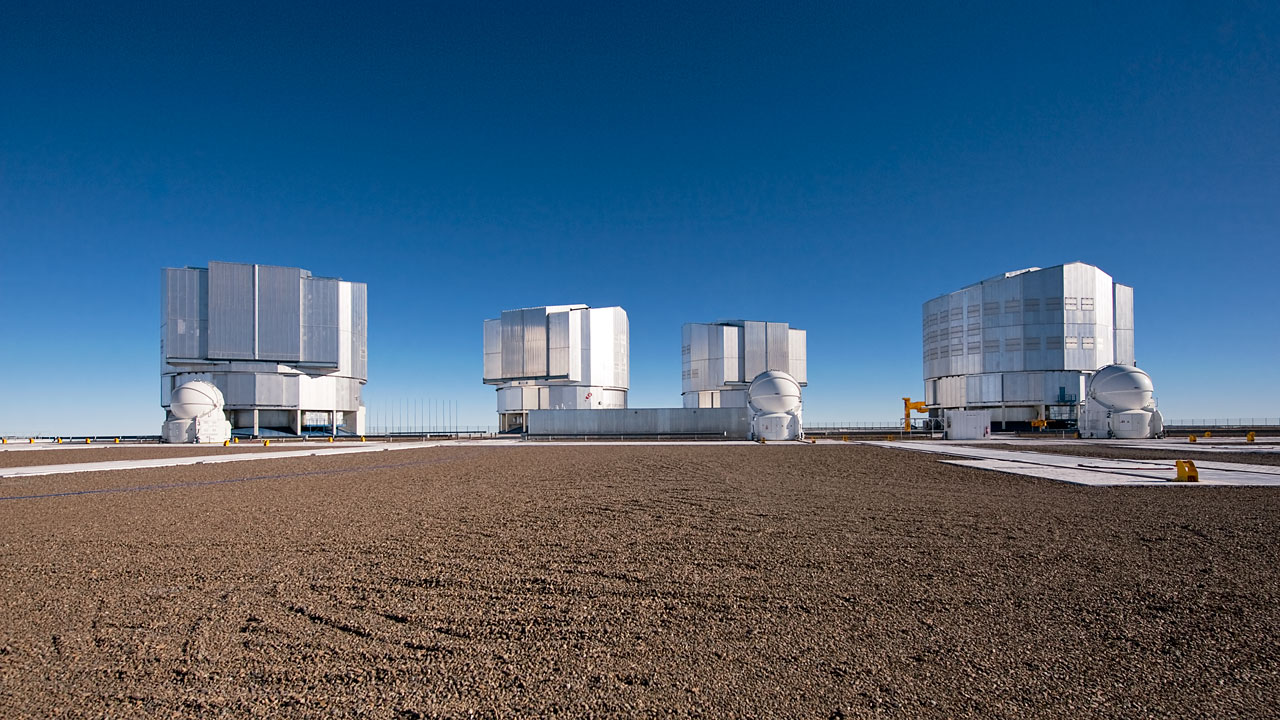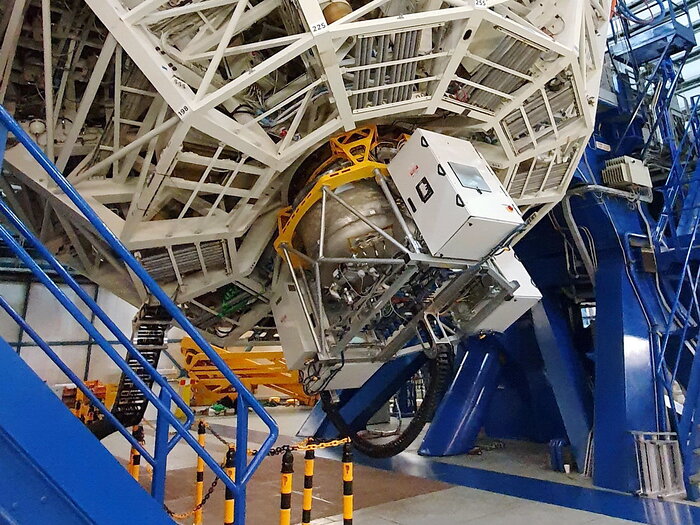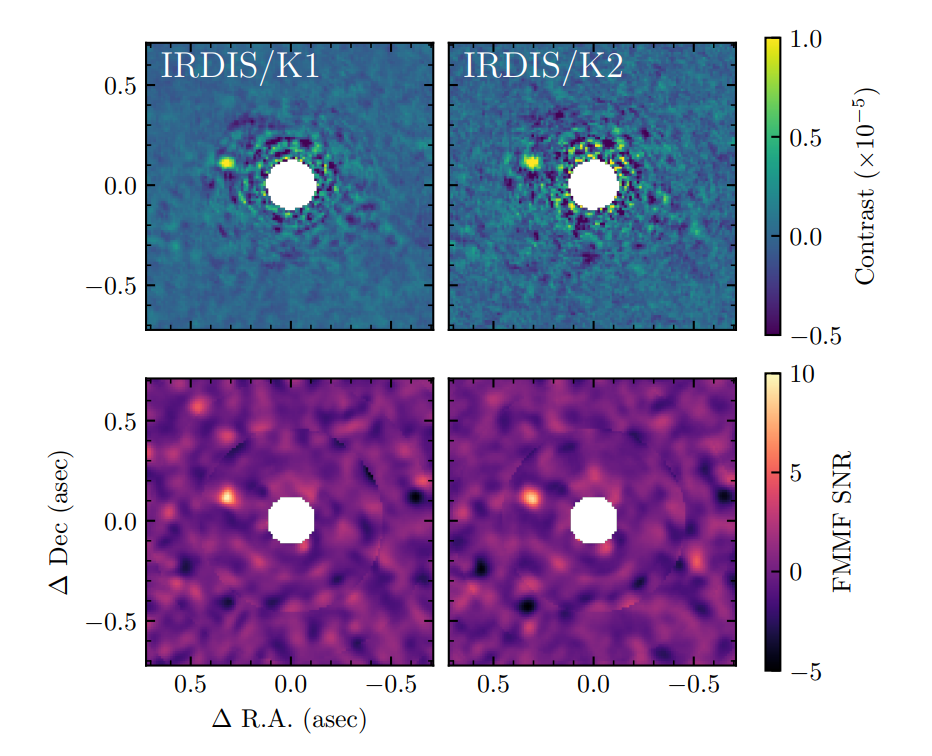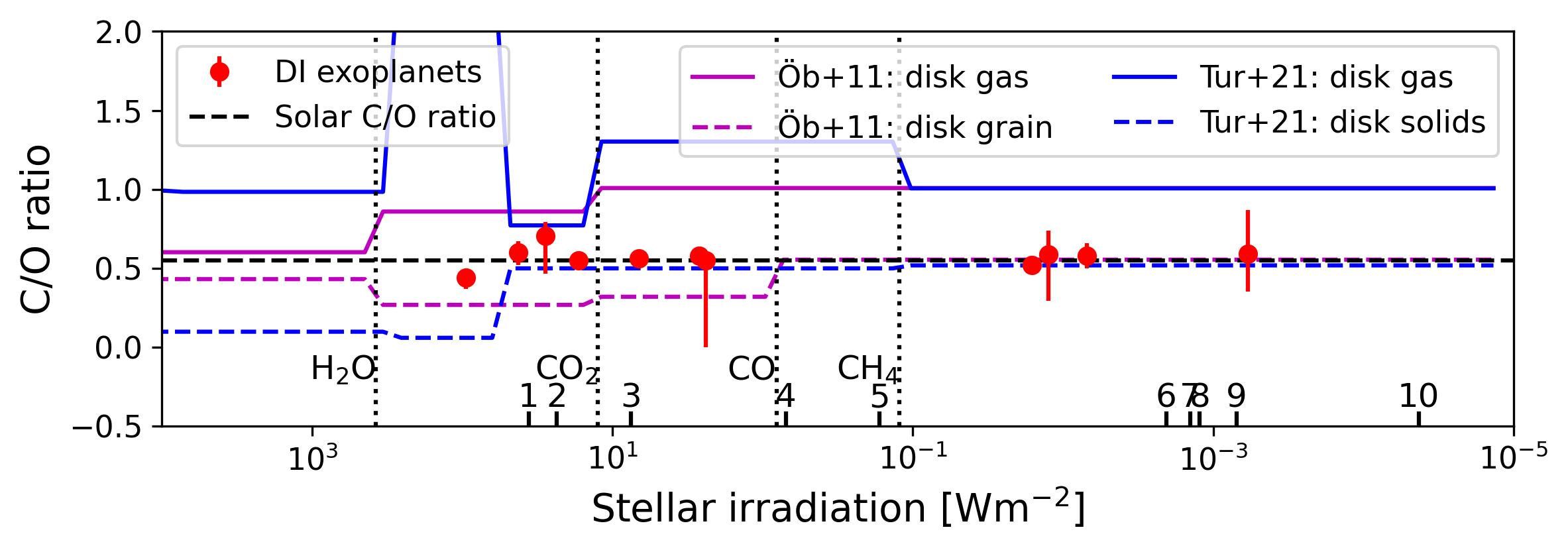Investigating the atmospheric C/O ratio as a tracer of planet formation history using the Very Large Telescope
The Exoplanets and Habitability group of the Institute for Particle Physics and Astrophysics was awarded 24h of observing time with the new Infrared instrument ERIS (Enhanced Resolution Imager and Spectrograph) at the Very Large Telescope (VLT) in Paranal, Chile.
The project, led by PhD student Jean Hayoz, aims at leveraging the moderate spectral resolution (R~11’000) of the SPIFFIER spectrograph and its cutting-edge Adaptive Optics system to directly measure the K-band spectrum of 10 low-mass companions. This measurement will allow us to investigate the atmospheric composition of substellar objects at the boundary between the brown dwarfs and gas giant exoplanets.



Of particular interest to the team is the elemental carbon-to-oxygen (C/O) ratio of the atmosphere, which is thought to trace back the formation history of substellar companions. Indeed, planets are formed and subsequently accrete a gaseous envelope in so-called protoplanetary disks (PPDs). These disks contain the remaining matter of giant molecular clouds which collapse to give birth to new stars. The matter found in PPDs can have different states depending on the stellar irradiation, which depends on the distance to the star via an inverse-square law. Water for instance cannot form solid ice close to the star due to the elevated temperatures that prevail there and can mostly be found in gaseous form. The distance at which water ice sublimates is called the “water snowline”. Most molecules (the so-called volatiles) possess such a snowline, and their position varies depending on their bonding energy. Therefore, when a planet accretes its envelope in a PPD, it receives different amounts of each molecule in solid or gaseous state depending on its location relative to the snowlines, which in turn impacts the gaseous C/O ratio. Hence, by measuring the chemical composition of the atmosphere, the location at which the planet accreted its atmosphere can be inferred.

In the current state of the field, this effect is only hypothesized by planet formation models tracing back to the pioneering external pagestudy of Öberg, Murray-Clay, and Bergin back in 2011. The team hopes to find robust evidence for (or against) this effect by measuring the atmospheric C/O ratio of 10 low-mass companions across the snowlines of CO2, CO, and CH4.
The European Southern Observatory (ESO), which operates the four 8.2m telescopes of the VLT, allows the astronomical community to compete for observing time via a distributed peer review system. The observing proposals are ranked according to the grades attributed by the reviewers and the best ones are granted observing time until the full semester is booked out. The competition can be fierce: the UT4, the telescope where the new ERIS instrument is installed, received proposals for 13.5x more time than it can offer this semester. However, ESO rewards the members of the consortia who built its instruments by granting them Guaranteed Time Observations (GTO), allowing them to bypass the competitiveness of open-call proposals and directly receive a share of the available telescope time to use the instrument that they built.
The observing time that was awarded to our group was deducted from such a GTO contract, which our group obtained for building two cryogenic mechanisms for NIX (the imager of ERIS) back in 2018, namely the Aperture Wheel and the Pupil and Filter Wheel. The ERIS instrument was installed at the VLT during early 2022, after which it underwent commissioning (i.e. calibration), for which Jean and fellow PhD students Felix Dannert and Markus Bonse were strongly involved. ERIS finally released its first image of the cosmos at the end of 2022.
